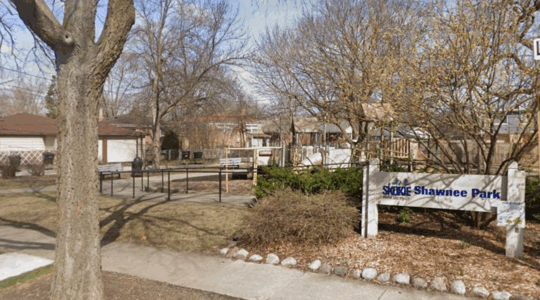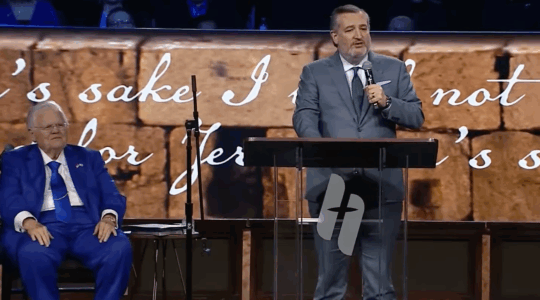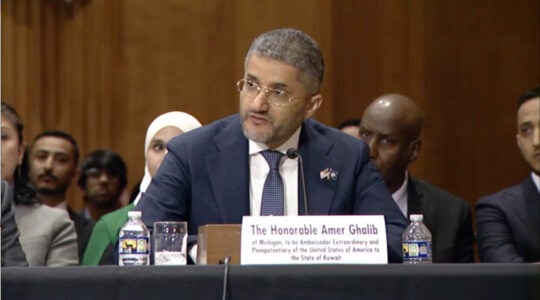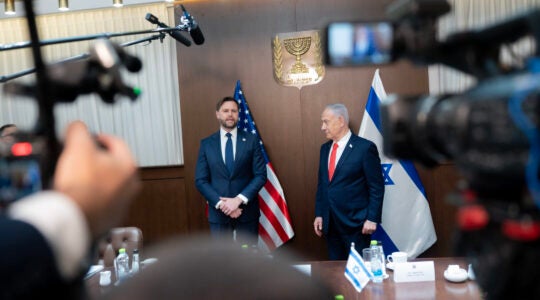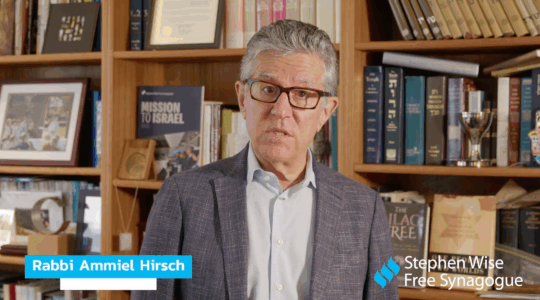SAN FRANCISCO (JTA) – When I sat down to watch “The Jewish Americans,” a six-hour PBS documentary set to air this month, I expected it to begin at Ellis Island.
That’s the hackneyed image most often used to sum up American Jewish history: Nothing says American Jewry like an overcrowded boat sailing into New York harbor.
But this film opens differently, with a lonely Jewish peddler trudging through the woods and a voice-over proclaiming, “Jews were considered outsiders.”
Ellis Island does show up later – along with the Catskills and the Holocaust – but in that first quiet image filmmaker David Grubin demonstrates his film will not be the usual chronological review of key moments in American Jewish history.
Instead, this film, which cost more than $3.2 million to produce, is a fresh, intelligent take on the story of Jews in America, structured around the themes of identity and adaptation: how one small immigrant group fought its way into the American mainstream while managing to hold onto its core traditions.
It is, as one on-screen interviewee says, the story of “the outsider pressing his nose up against the window and looking in.”
It is also a film aimed at a general audience – a smart audience, but not necessarily a Jewish one. Grubin told JTA he “tried hard not to do inside baseball.”
Jews look good in Grubin’s film. He emphasizes Judaism’s prophetic tradition as he focuses on American Jewish contributions to abolitionism, civil rights, social justice and other universal causes, showing individual Jews reaching outside their parochial interests to make America a better place.
Jewish warts show up largely as a function of wealth: Jews owned slaves in the antebellum South, Jews were the owners of the Lower East Side sweatshops that oppressed Jewish (and other) workers. It’s a slant, but so is the more usual “everyone’s-against-us-but-we-got-to-the-top-anyway” conceit at the center of some Jews’ account of their own history in this country.
Much of what gives “The Jewish Americans” its lyrical beauty is its technique of having living Jews, famous or not, tell their ancestors’ stories. It’s a brilliant device that works just as well whether it’s an unknown woman talking about her family’s colonial-era matriarch or Irving Berlin’s daughter offering tidbits from her famous father’s songwriting career.
The technique of people telling their ancestors’ stories is also a powerful illustration of how the careful transmission of tradition has preserved the Jewish community.
In one particularly poignant vignette, a woman wraps up the story of her great-great-grandmother, who raised nine Jewish children on the Arizona frontier, by pointing to the pearl necklace she is wearing. She notes it once belonged to her ancestor, declaring, “The tradition is transforming again, and here I am.”
It’s also great fun when Grubin gets famous personalities to move outside their comfort zone, a kind of People magazine titillation for the PBS crowd.
Thus we have Pulitzer Prize-winning playwright Tony Kushner, usually interviewed defending gay culture, talking about his grandparents on the Lower East Side and his regret that young Jews today will never know that immigrant generation. Michael Tilson Thomas, music director of the San Francisco Symphony, tells the colorful story of his grandfather Boris Tomashevky, star of the early Yiddish theater. Supreme Court Justice Ruth Bader Ginsburg relates how, in her freshman dormitory at Cornell University, she and the other girls on her corridor realized they were all Jewish, as if the school had put them together “so we wouldn’t contaminate” the other students.
Certainly, the thematic structure of this film and the way it dwells at length on key events and individuals that illustrate those themes means that a lot of history gets left out.
The most obvious is the story of how Judaism itself grew and changed in America, a story Grubin says wasn’t his focus; he’s interested in how American Jews interacted with the greater society, not how the community developed internally.
The least successful of the three two-hour episodes is the last, covering the postwar period, and it is still riveting. Sections on the trial of Julius and Ethel Rosenberg, the struggle for Soviet Jewry, the Jewish contribution to the women’s movement and Jews in the civil rights battle are excellent, particularly the filmmaker’s uncompromising look at how the black-Jewish alliance of the early 1960s broke down.
But short shrift is given to the past two decades, with an awkward focus on the marginal: A meditation service, Matisyahu and “The Hebrew Hammer” don’t quite convey the full richness of Jewish innovation at the dawn of the 21st century. That final blip, however, is a rare misstep in this magnificent tale, beautifully told.
The Jewish Americans, a production of JTN Productions, WETA Washington, DC, and David Grubin Productions, Inc., in association with Thirteen/WNET New York, will be aired on PBS in three parts on Jan. 9, 16 and 23.
JTA has documented Jewish history in real-time for over a century. Keep our journalism strong by joining us in supporting independent, award-winning reporting.
